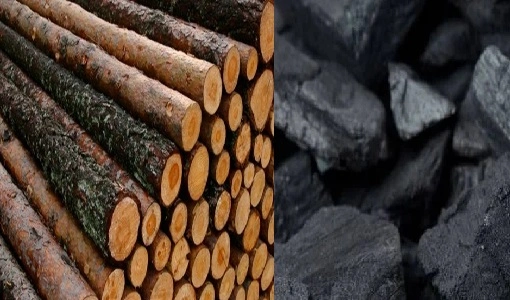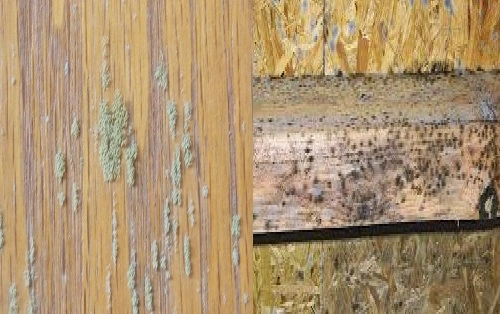When it comes to choosing between wood logs and charcoal for heating, grilling, or other applications, efficiency is often the deciding factor. Both are popular fuel sources, but they differ significantly in energy output, burn time, environmental impact, and practicality. Understanding the strengths and weaknesses of each can help you make the right choice for your needs, whether you’re heating your home or firing up the grill.
In this article, we’ll compare wood logs and charcoal in terms of energy efficiency, cost, environmental impact, and ideal applications.
What Are Wood Logs?
Wood logs are a natural, unprocessed fuel source made from cut and seasoned tree wood. They can be burned in fireplaces, wood stoves, outdoor fire pits, or even grills. For optimal performance, wood logs should be seasoned (dried) to reduce moisture content and improve combustion efficiency.
Advantages of Wood Logs:
- Readily Available: Wood logs are widely accessible and can often be sourced locally.
- Renewable Resource: As long as trees are replanted, wood is a sustainable fuel option.
- Low Cost: In many regions, wood is an economical heating or cooking fuel.
- Aromatic Qualities: Certain hardwoods, like hickory or oak, impart a smoky flavor that is prized in cooking.
Disadvantages of Wood Logs:
- Lower Energy Density: Wood logs provide less heat energy per unit than charcoal.
- Variable Moisture Content: Fresh or unseasoned wood can have high moisture levels, leading to inefficient burning.
- More Smoke: Wood produces more smoke and particulates, which can be problematic in poorly ventilated areas.
What is Charcoal?
Charcoal is a processed fuel made by heating wood in the absence of oxygen. This process, called pyrolysis, removes moisture and volatile compounds, leaving behind a concentrated carbon fuel. Charcoal is commonly used in grilling and other high-heat applications.
Advantages of Charcoal:
- High Energy Density: Charcoal burns hotter and longer than wood logs.
- Less Smoke: Since charcoal is almost pure carbon, it produces less smoke than wood.
- Ease of Use: Charcoal is lightweight, compact, and easy to store and transport.
- Consistent Performance: Processed charcoal briquettes are uniform in size and composition, providing predictable heat output.
Disadvantages of Charcoal:
- Higher Cost: Charcoal is typically more expensive than wood logs, especially for extended use.
- Environmental Impact: The production of charcoal can be less eco-friendly due to energy consumption and deforestation.
- Less Flavorful: Compared to wood logs, charcoal imparts less natural smoke flavor in cooking.
Efficiency Comparison: Wood Logs vs. Charcoal
| Feature | Wood Logs | Charcoal |
|---|---|---|
| Energy Output (BTUs) | ~6,500-8,000 BTUs per pound (seasoned wood) | ~12,000-14,000 BTUs per pound |
| Burn Time | Shorter burn time; needs frequent refueling | Longer burn time; more efficient for heat |
| Ease of Ignition | Requires kindling and more time to ignite | Easier to ignite, especially briquettes |
| Smoke Production | Produces more smoke | Produces less smoke and particulates |
| Moisture Content | ~20% for seasoned wood; reduces efficiency | <5%, making it highly efficient to burn |
| Cost | Generally cheaper, often free if self-sourced | Higher cost per pound or unit |
Energy Efficiency
- Heat Output:
- Charcoal has a higher energy density, producing more heat per pound than wood logs. This makes charcoal ideal for applications requiring high temperatures, such as grilling or forging.
- Burn Time:
- Charcoal burns for a longer period compared to wood logs, reducing the need for frequent refueling. This makes it more efficient for prolonged heating or cooking sessions.
- Moisture and Combustion:
- Wood logs, particularly unseasoned ones, retain higher moisture levels, which hinders combustion efficiency and lowers heat output. Charcoal, being dry and nearly pure carbon, burns more efficiently with minimal waste.
Cost Comparison
- Wood Logs:
- If sourced locally or from your own property, wood logs can be extremely economical or even free. For purchased wood, prices typically range between $200 and $400 per cord, depending on the type of wood and region.
- Charcoal:
- Charcoal is processed and packaged, making it more expensive than wood logs. Bags of lump charcoal or briquettes range from $0.50 to $1.00 per pound. While charcoal’s efficiency offsets some of its cost, it remains pricier overall.
Environmental Impact
- Wood Logs:
- When sourced responsibly, wood logs are a renewable and sustainable energy source. However, burning wood produces more smoke and particulates, contributing to air pollution.
- Charcoal:
- Charcoal production involves additional energy use and deforestation, particularly in regions without sustainable forestry practices. However, it burns cleaner than wood, emitting fewer particulates.
Applications: When to Use Wood Logs vs. Charcoal
- Heating:
- Wood Logs: Best for fireplaces, wood stoves, and outdoor fire pits where sustained heat is required, and the smoke can be vented properly.
- Charcoal: Less commonly used for heating due to its higher cost but effective for portable heaters or forges.
- Cooking:
- Wood Logs: Preferred for smoking meats or creating a rustic, smoky flavor in outdoor grills or fire pits. Specific hardwoods like hickory or mesquite are prized for their rich aroma.
- Charcoal: Ideal for grilling due to its high heat, longer burn time, and minimal smoke. Lump charcoal is favored for its natural composition, while briquettes offer consistency.
- Recreational Use:
- Wood Logs: Perfect for campfires or backyard gatherings, where the ambiance and crackling sound add to the experience.
- Charcoal: Better for controlled cooking or heating in portable setups.
Conclusion: Which is More Efficient?
The efficiency of wood logs vs. charcoal depends on your specific needs:
- For Heating: Wood logs are more cost-effective and practical for long-term heating in fireplaces or wood stoves. Properly seasoned wood provides decent heat output and a natural, renewable fuel source.
- For Cooking: Charcoal is the winner, offering higher temperatures, longer burn times, and cleaner combustion, making it ideal for grilling and high-heat applications.
When choosing between wood logs and charcoal, consider your goals, budget, and environmental priorities. For sustainable use, ensure your wood or charcoal is sourced responsibly, and always follow safe burning practices. Both materials offer unique advantages, and understanding these can help you make the best choice for your home or outdoor activities.


